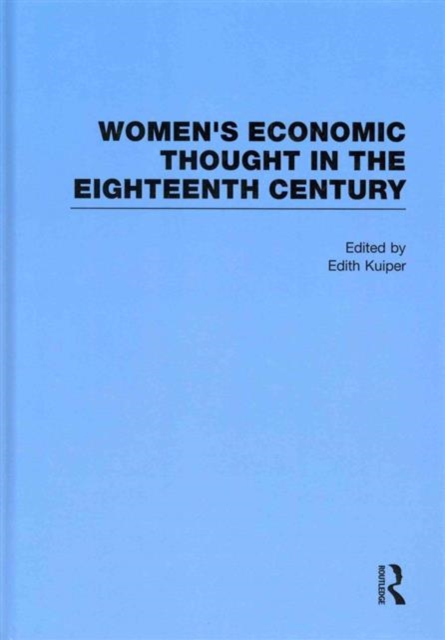
Women’s Economic Thought in the Eighteenth Century Multiple-component retail product
Edited by Edith (State University of New York, New Paltz, USA) Kuiper
Multiple-component retail product
Description
In the history of economics, women writers were all but invisible until a few decades ago.
Although much work has now been recuperated, the writings on economics of eighteenth-century women authors have yet to be brought fully to light. This new three-volume collection from Routledge remedies that omission and makes key archival source material readily available to scholars, researchers, and students.
This comprehensive compilation of eighteenth-century works by women writers includes several texts translated into English for the first time, such as an important critique on Adam Smith’s Theory of Moral Sentiments (1759) by Sophie de Grouchy Condorcet. The collection is divided into three volumes. Volume I (‘The Economy of the Household’) addresses the following topics: moral and economic conduct; women’s position in marriage; gender equality; and household production.
The second volume (‘The Economy of the Market’), meanwhile, brings together texts that address education, work, wages, access to the professions, and issues of wealth and poverty more generally.
Volume III assembles materials under the title ‘Women’s Views on Institutions and Change’. Women’s Economic Thought in the Eighteenth Century is a treasure-trove for all serious scholars and students of economic history.
The gathered works are reproduced in facsimile, giving users a strong sense of immediacy to the texts and permitting citation to the original pagination. And with a detailed and comprehensive introduction placing the materials fully in context, the collection is destined to be welcomed as a vital reference and research resource.
Information
-
Available to Order - This title is available to order, with delivery expected within 2 weeks
- Format:Multiple-component retail product
- Pages:1966 pages
- Publisher:Taylor & Francis Ltd
- Publication Date:13/12/2013
- Category:
- ISBN:9780415495714
Information
-
Available to Order - This title is available to order, with delivery expected within 2 weeks
- Format:Multiple-component retail product
- Pages:1966 pages
- Publisher:Taylor & Francis Ltd
- Publication Date:13/12/2013
- Category:
- ISBN:9780415495714






